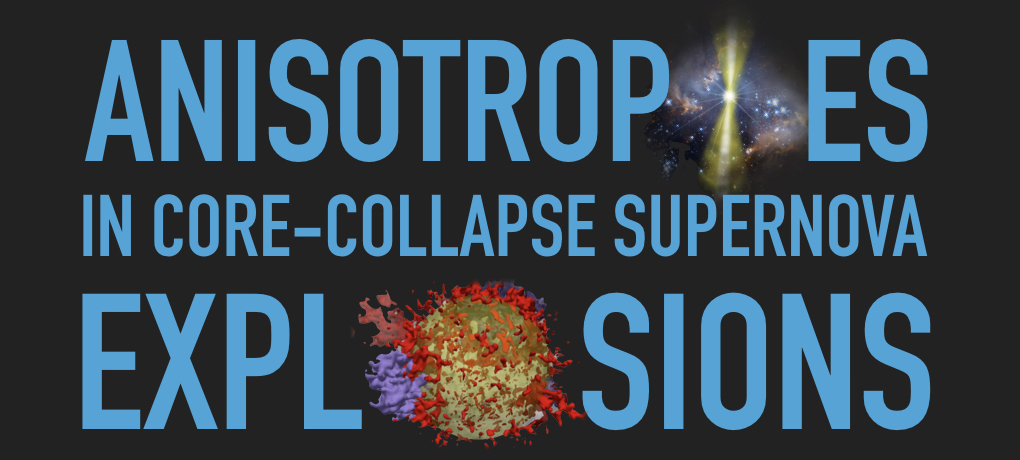|
WE SUGGEST TO VISUALIZE THE WEBPAGE WITH GOOGLE CHROME BROWSER Massive stars end their lives with a supernova (SN) explosion and some of them are associated with collimated gamma-ray bursts (GRBs). Core-collapse supernovae (CC-SNe) always show signatures of anisotropies, ranging from small perturbations in the velocity/density/chemical composition of the ejecta, up to massive and energetic jet-like structures. Evidence for anisotropies arises from observations at different wavelengths (from the radio band up to the gamma-rays) and from different classes of sources. Highly collimated explosions can be connected with the formation of magnetars and can be the result of particular properties of the progenitor star. Though deviations from the spherical symmetry are always expected on a theoretical ground, understanding the physical parameters determining the degree of anisotropy in the outcome of the explosion is important to constrain the processes at work in a SN. To properly address the issue of anisotropies in SNe, it is necessary to adopt a multidisciplinary approach, and to bridge the gap between the different communities involved in this topic. The final aim of this meeting is to gather people from different fields: late stellar evolution, SNe, GRBs, compact objects, PWNe and SNRs. The interplay between the different phases of stellar evolution (preceding and following the SN event) is extremely strong and a deeper level of diagnostics can be achieved only through a comprehensive view. With this workshop we aim at spreading the knowledge acquired within each of these fields to a broader community. This will provide an opportunity to get a more complete view of the problem, and will act as a booster for possible collaborations, well in line with the objectives of the PHAROS COST Action.
There is no registration fee but the number of participants is limited to 50 persons. Partial financial support for a limited number of PhD syudents is avilable upon request (contact: marco.miceli@inaf.it).
|
Choose timezone
Your profile timezone:




